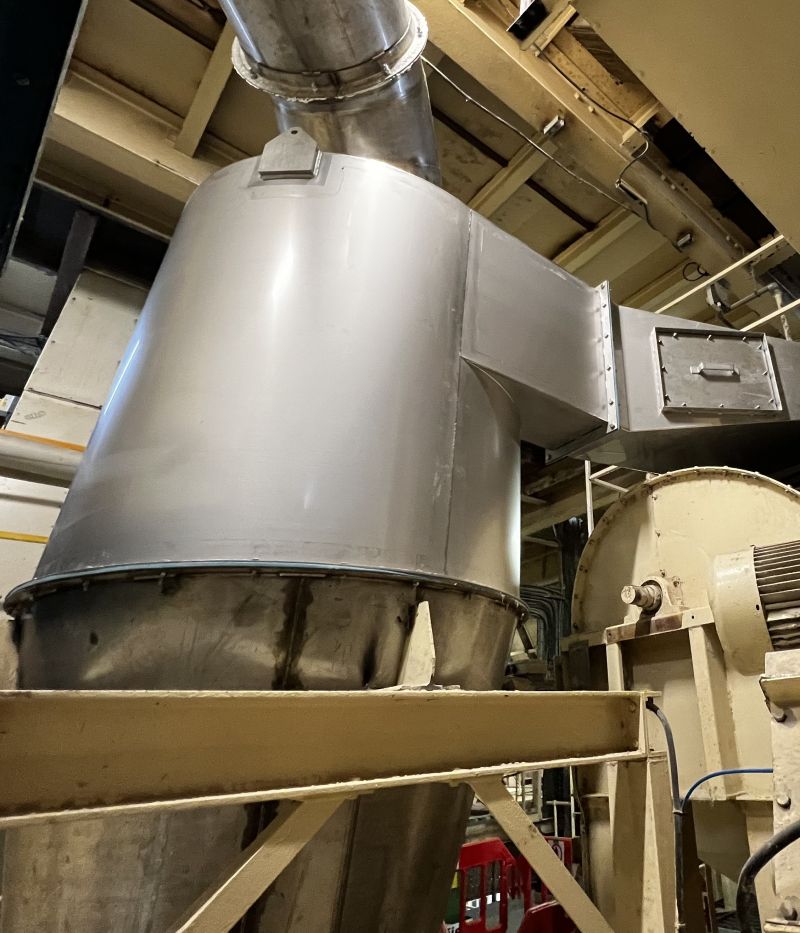
FEG COMPLETES CYCLONE REDESIGN TO MEET CHANGING EMISSIONS REGULATIONS

A previously-installed cyclone at the AB Agri Enstone mill risked no longer meeting new BAT emissions regulations, which had been reduced to 20mg3 from the previous limit of 50mg3. Our filtration team at FEG Global was tasked with designing and installing a solution that would meet the revised emissions limits.
Client AB Agri is a prominent manufacturer or animal feed, nutrition and technology-based products. The Enstone site, a mill located just on the outskirt of Chipping Norton, processes animal feed for pig and poultry. In this project we helped them meet changing emissions regulations while continuing to meet desired quality and efficiency operating targets.
KEY FACT
WHAT ARE BAT AND BREFS?
The Industrial Emissions Best Available Technique (BAT). regime governs the techniques used in industry to prevent/minimise emissions and associated environmental impact. BREFS are the reference documents produced with the BAT regime that detail the emissions limits set for companies to follow. Any large industrial operation using particular activity types is required to follow BAT in order to reduce their emissions to air, water and land. This is crucially important in driving industrial sustainability and a reduction in pollution, given that large industrial plants and livestock farms are responsible for over 50% of Europe’s human activity-led air emissions.
PROJECT CONSIDERATIONS
In some applications, cyclones are typically not as efficient as more traditional approaches such as filters, bags and cartridges. However, in these particular operating circumstances, the presence of damp and acid gas ran the risk of blocking a filter or bag. Added to this was the risk of warm, moist air and organic matter entering any traditional system and creating the perfect environment for the breeding of harmful microbes and bacteria. Even efforts to coat the bags would not negate the microbial risk in this instance.
An additional challenge was the site’s physical space constraints. It was important to take into account the space available and ensure any solution would fit while remaining cost-effective.
Our team started by looking at the current cyclones, their operating history, regimes and function. We identified some issues in the design that could be revised to help improve emissions targets and also the efficiency of the cyclone itself. We then progressed by modelling the performance of the existing cyclone against new cyclone designs, while testing various theoretical efficiency and emissions outputs. Once the design had been finalised we created and installed the revised cyclone, including a redesigned cyclone top, in keeping with space constraints and, importantly, existing equipment and processes. The final project piece was to organise and oversee testing of the cyclone to ensure targets were being met.
PROJECT OUTCOME
The cyclone not only met the new emissions standards but also operated more efficiently than the previous model – improving overall operations efficiency. The design was balanced and airflow were correct. Overall, a positive, low-cost outcome for our client.
Do you have a filtration or emissions challenge?
Let the expert team at FEG Global help you meet your commitments.
External URL: https://www.feg-global.com/projects/cyclone-redesign-to-meet-changing-emissions-regulations/
By FEG
297 Views
Recent Posts
- CBAM and the Role of LCA
- Join WBD for our Imposter Syndrome Fireside Chat – 11th February @ The Wilton Centre
- Secerna Expands Life Sciences Team with the Addition of Trainee Patent Attorney
- Addison in ground breaking SAF development
- Flexitallic and TT Gaskets join forces to drive innovation within the New Energy sector
Back to News >



